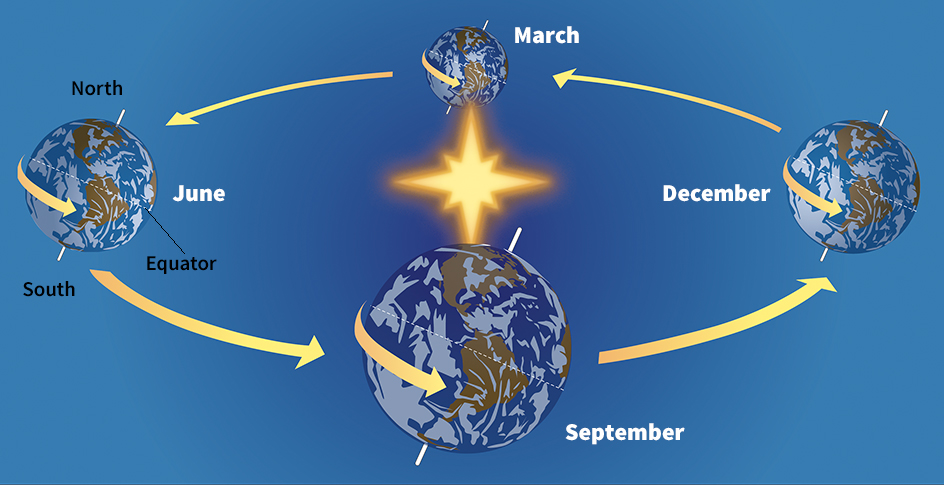Year is the time Earth takes to make one complete revolution around the sun. There are two different kinds of years which are used by astronomers. The solar, equinoctial, or tropical year is the time between two passages of the sun through the March equinox. In the Northern Hemisphere, this equinox is called the vernal equinox. This year is 365 days, 5 hours, 48 minutes, and 46 seconds long. This year is used for all practical and astronomical purposes. It is the basis of our common or calendar year.

The sidereal year is made up of 365 days, 6 hours, 9 minutes, and 9.5 seconds. This is the time it takes Earth to return to the same place in its orbit, with reference to the fixed stars. The sidereal year is longer than the solar year because of the precession of the equinoxes. The sidereal year is seldom used except in the calculations of astronomers.
The calendar year
is only 365 days long, and so we have to add an extra day every four years to correct the difference in time between the calendar year and the solar year. This fourth year is called leap year, and the extra day is February 29. Adding an extra day every fourth year makes the average calendar year 11 minutes, 14 seconds too long. So, the day is not added in the century years, except in those divisible by 400. The years 1700, 1800, and 1900 had only 365 days. The year 2000 had 366 days.
Today, the leap second corrects for differences in Earth’s rate of rotation from year to year. It is usually added to or subtracted from the last minute of the year.
The lunar year is made up of 12 lunar months. The ancient Greeks used this year. It contained 354 days.
In most Western nations, the calendar year begins on January 1. During the Middle Ages, however, most European nations considered March 25, Annunciation Day, to be the first day of the calendar year. By 1600, most of them had adopted the Gregorian calendar, which recognized January 1 as the beginning of the year.
The church calendar,
which is used in the Roman Catholic and in most Protestant churches, is regulated partly by the solar and partly by the lunar year. This causes a difference between the fixed feast days, which always fall on the same day every year, and movable feasts such as Easter, whose dates vary from year to year. The fixed feast days are determined by the solar year, and the movable feast days, by the lunar year.
In the early ancient Roman calendar, the year began on March 1. Later, the Romans used January 1 as the new year. The Jewish year begins near the September equinox, which is known as the autumnal equinox in the Northern Hemisphere. The Islamic year is based on the changing of the phases of the moon and lasts 354 days. Therefore, the beginning of the Islamic year continually falls earlier in the seasons. Thirty Islamic years make up a cycle during which there are 11 leap years at irregular intervals.
